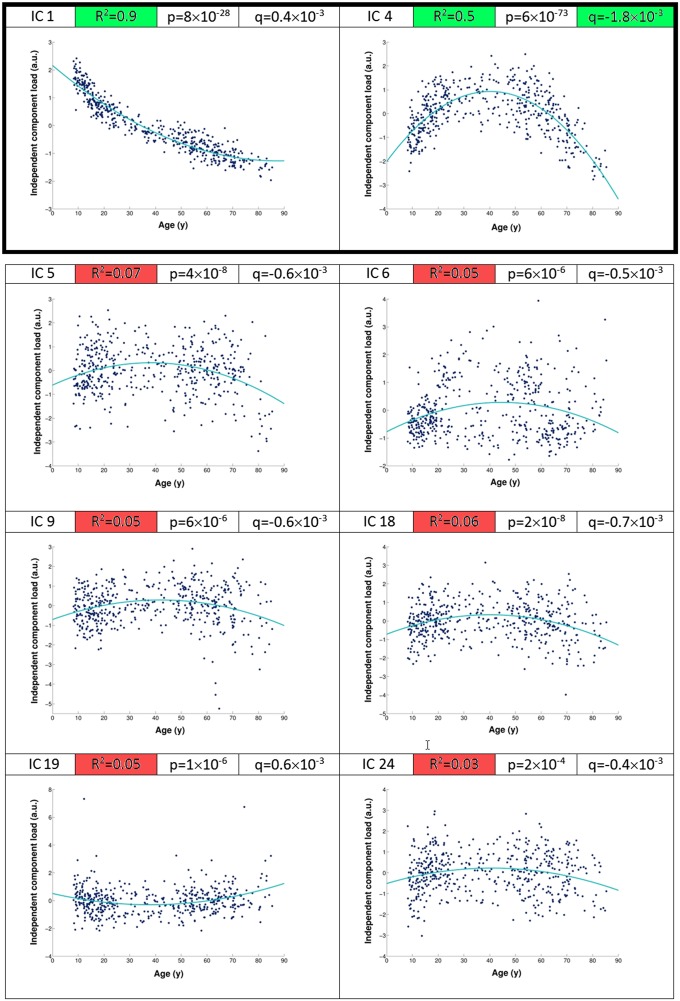Fig. 1.
Of all eight age-related components, only two achieved clear practical significance. We assessed post hoc the relationship of each of the 70 components with age (using polynomial fit). Of eight statistically significant components (all P < 0.05 corrected for multiple comparisons), only two achieved clear practical significance (IC1 and IC4), as measured by the percentage of age-related variance explained with a quadratic fit (indicated by the R2 values): the “global” dominant mode showing monotonic decrease of the whole gray matter with age (IC1), with 90% of the variance of IC1 across subjects explained by age (R2 = 0.9), and the inverted-U component (IC4), with 50% of IC4 variance explained by age (R2 = 0.5). R2 values for all other components were below 0.1. The inverted-U component IC4 showed a symmetric, strong nonmonotonic relationship with age and presented the strongest quadratic fit as measured by its quadratic coefficient (q = −1.8 × 10−3). a.u., arbitrary unit.

